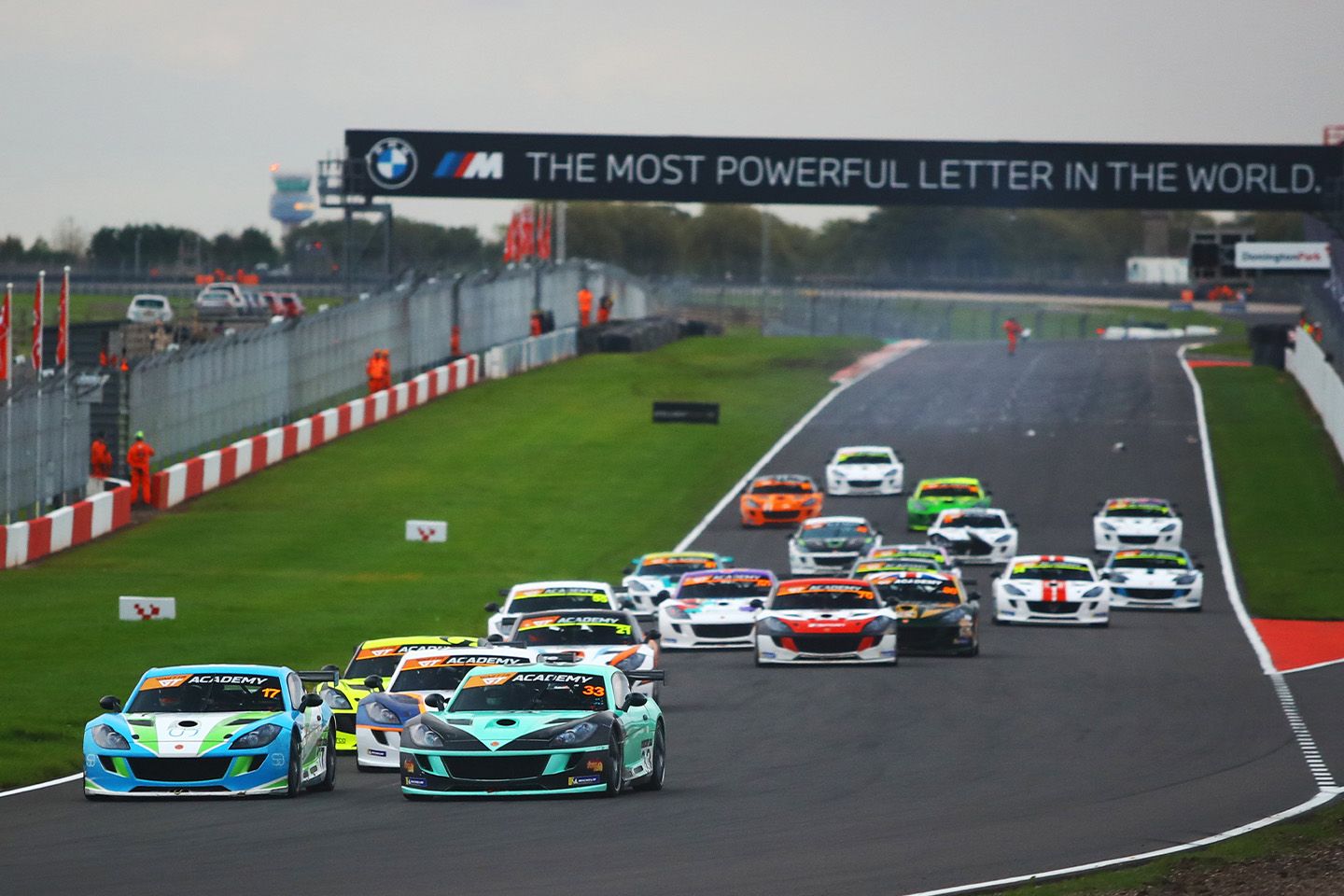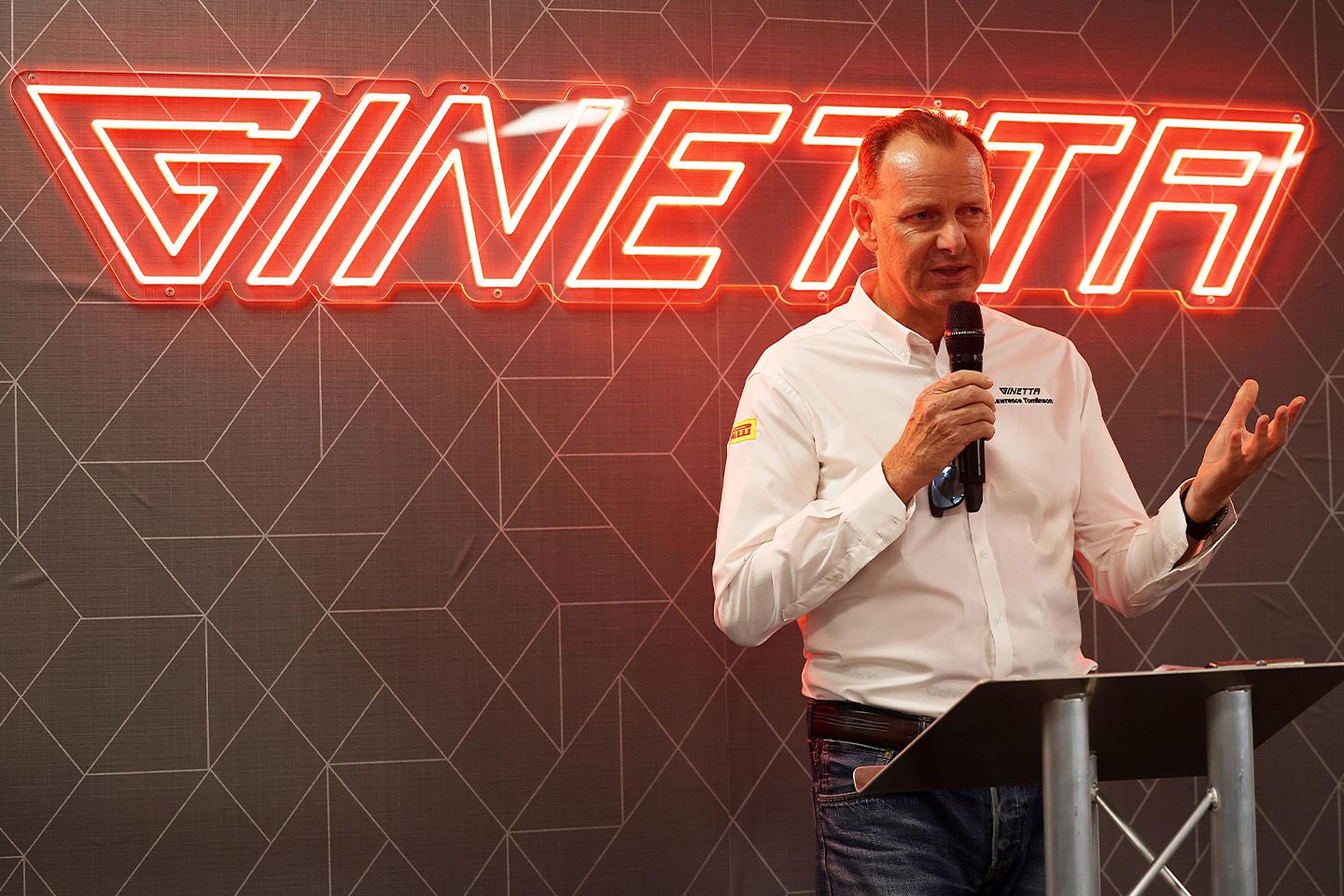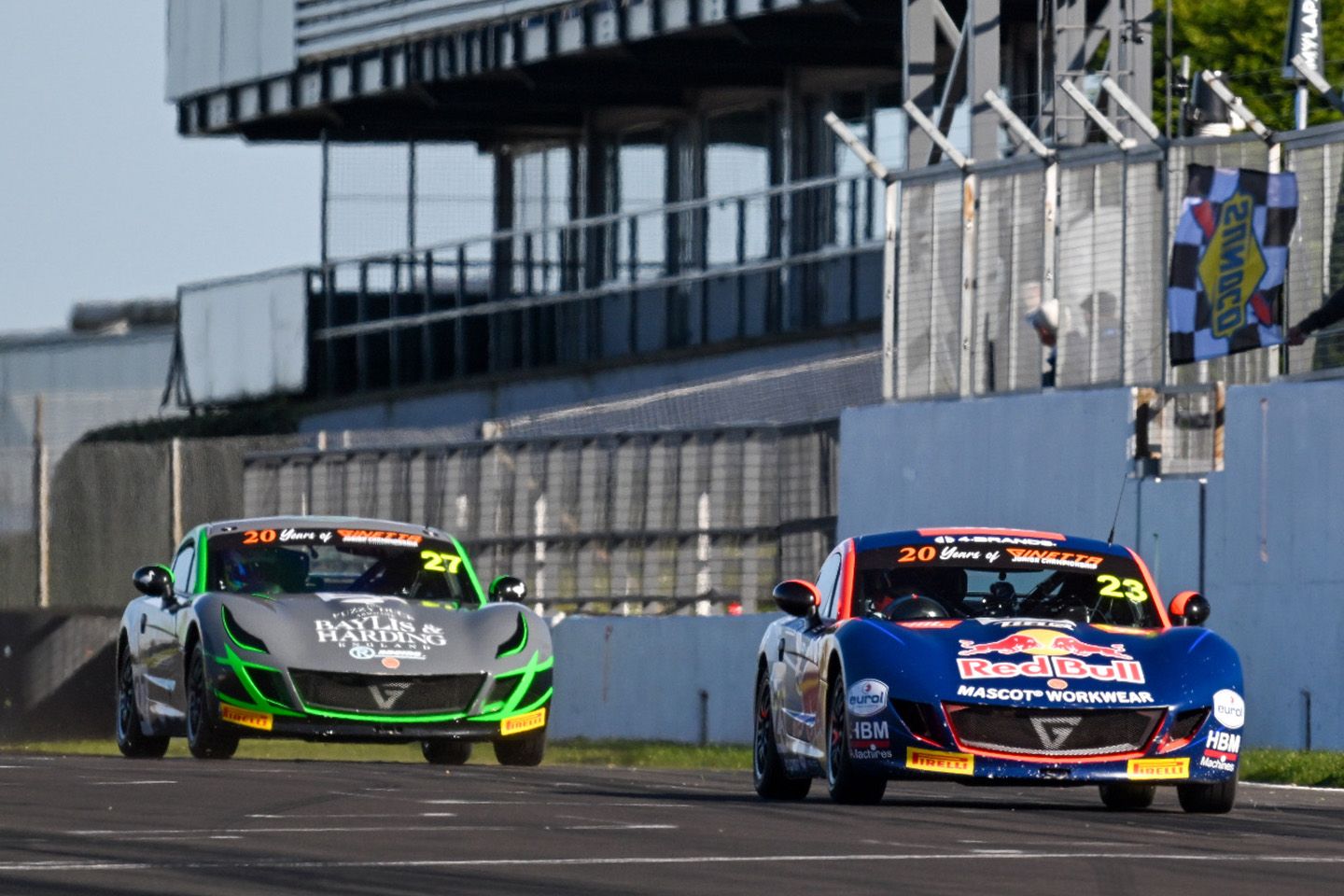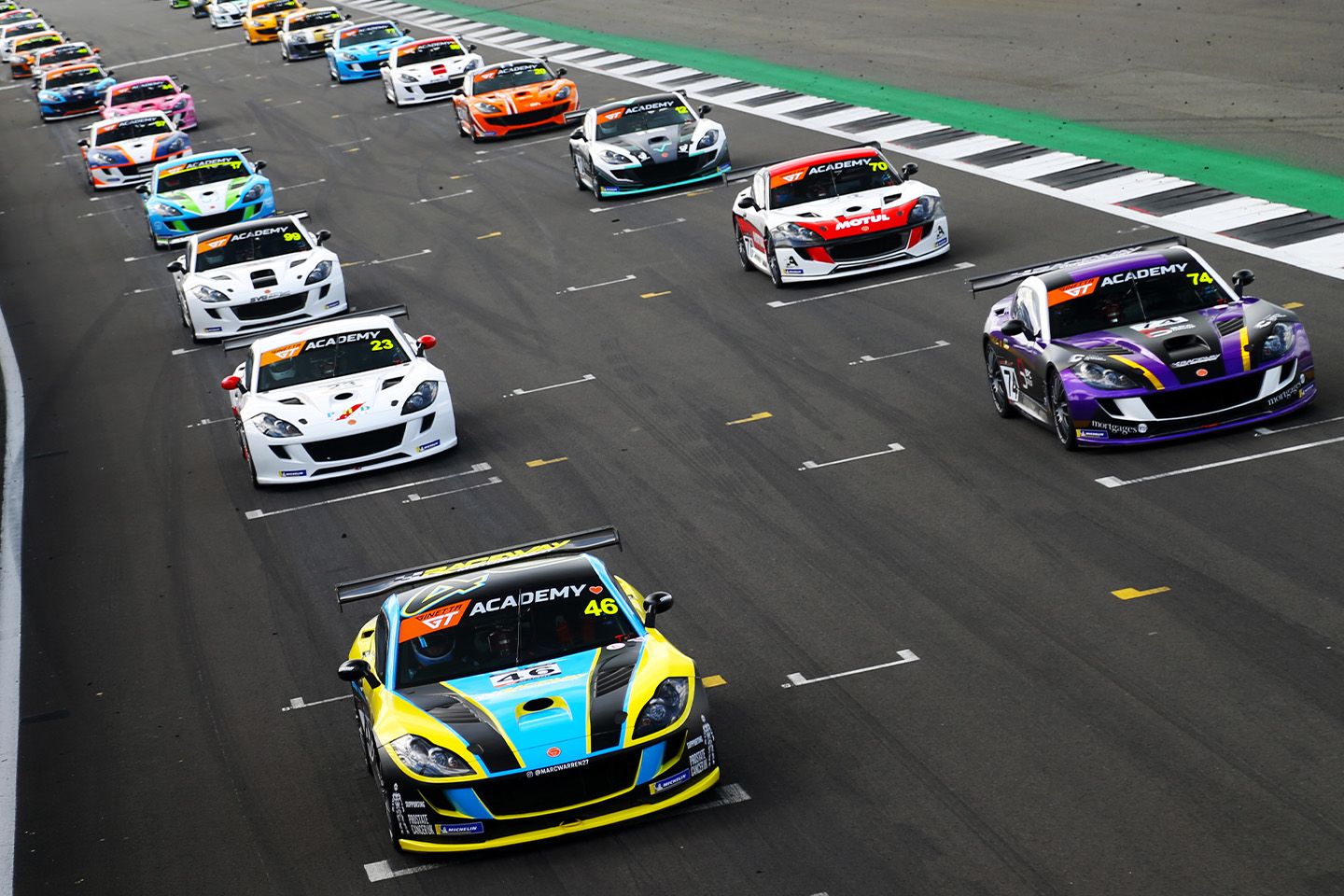
Motorsport is in a bit of a weird place in 2025. The world is a vastly more expensive backdrop than it was five years ago, and the road ahead is looking far bumpier than many anticipated, which doesn’t leave the exceptionally well-heeled with much spare change to go racing. The British GT grid has shrunk over the last 12 months, and while the BTCC field is a little more dense than before it’s still way down on the 30-strong rosters of yesteryear. Even Formula 1, one of the wealthiest sports on the planet, is mulling the idea of ditching next year’s incredibly clever (and incredibly expensive) half-electric, half-combustion powertrain ruleset early to prevent costs spiralling out of control. Again.
Don’t let that stop you from dusting off your lid and overalls, though, because things are looking much rosier further down the motorsport ladder. Former Ferrari man Rob Smedley recently told us that his FAT Karting League has already slashed the cost of entry into karts by a staggering 96 per cent, and doesn’t plan on stopping there. Then there’s Ginetta, the British racing firm that’s been the bedrock of entry-level sports car racing for the past two decades. It marked the 20th anniversary of its hugely competitive Junior championship at Donington Park earlier this month, with a record-equalling grid of 28 cars being driven on their door handles by a bunch of teenagers.
You can direct your thanks to Lawrence Tomlinson, who’s headed the company since acquiring it back in 2005. Prior to that, Ginetta had been ticking along as a low-volume sports car manufacturer with a small presence in amateur motorsport, just as it had been since its inception in 1958. Tomlinson, meanwhile, had been a loyal TVRist, having raced the monstrous T400Rs in the British GT, various endurance series across the globe and at Le Mans, and even tried to buy the company from Peter Wheeler in 2004 but was ultimately gazumped by Russian businessman, Nikolay Smolensky. Frustrated and with a car company’s worth of cash burning a hole in his pocket, Tomlinson purchased Ginetta a year later and set about turning it into the motorsport powerhouse it is today.


Smolensky’s TVR may have delivered the superb Sagaris and a heavily reworked Tuscan, but financial difficulties set in a couple of years down the line and production was put on hold. Oh, how different things would have been had Tomlinson’s offer been accepted. Under his ownership, Ginetta has launched countless new models aimed at getting young and inexperienced drivers into racing without bankrupting their families in the process. The Ginetta Junior series, for instance, has proven hugely beneficial for drivers making the switch from karts to cars, with McLaren Formula 1 driver, Lando Norris, among many graduates to go on to become world-class drivers.
“You look at any grid anywhere in the world and there will be an ex-Ginetta Junior driver racing, whether it’s a factory BMW, factory Porsche, factory McLaren drivers, there are so many Ginetta junior drivers out there”, says Tomlinson. “Everybody goes to Lando as being an ex-Ginetta Junior driver and, you know, he was great. But we’ve got Jamie Chadwick, who won in LMP2 in the ELMS (European Le Mans Series) at the weekend. There’s just so many people who’ve come through it. I think Lando was having a pizza with his mates on TV, as he’s always on TV with Formula 1, and he was asked what was his favourite race series. He said Ginetta Juniors, which was quite surprising!”
Tomlinson jokes that it’d be a great idea to get a few junior drivers backed by different F1 teams on the grid decked in their respective colours (McLaren orange, Alpine blue and so on) – though it’s perhaps not as farfetched an idea as it seems. Red Bull, which likes to chuck its drivers in at the deep end, is fielding two of its young talents in the series this year. “It’s super competitive, really difficult racing”, notes Tomlinson. “The cream comes to the top in the Ginetta Juniors, and they’ve really got to fight for their wins.” Little wonder it’s come onto Red Bull’s radar, then, and don’t be surprised if it opens the floodgates for further F1 involvement in the future.


On the flip side, that could also mean a heck of a lot more money pouring into a championship designed to run on a shoestring budget. Quite what impact that will have is purely hypothetical, but Ginetta’s aim to simplify and continue slashing costs appears unwavering. For this year’s Ginetta G40, there is a comprehensive upgrade package that introduces simpler, lighter parts that are easier and cheap to replace in the (likely) event of an accident.
“The G40 door was very expensive, because it was originally a road car door”, says Tomlinson. “So it’s got a winding window, it’s got a piece of aluminium that slides up and down, it’s got all the mechanisms in. It’s very complicated to build. We have to put it all together here and all of that road car functionality is not used at all. In fact, it’s detrimental. So we just make a better-looking door, though the mirror was really expensive, so we’ve gone to a different mirror.” Additionally, he adds, the rear is now a single piece, negating the cost of a pricey “bespoke” boot hinge made in-house. The front end is just the same, while also ditching the road car’s headlights to slash the cost and repair time of a nose change.
Naturally, entry-level motorsport is heavily weighted towards young drivers (because you’re beyond F1 material after your 10th birthday) and, as a result, the Junior championship is arguably Ginetta’s biggest series. But there’s an ever-growing number of older motorsport newbies who are too, er, senior to be eligible for the Junior championship. For them, there’s the GT Academy (not to be confused with the Gran Turismo Academy of the early 2010s), which consists of quicker, V6-engined G56 cars decked out with wings, splitters and a prototype-style steering wheel. I had a go in one late last year and it’s a brilliant bit of kit, with an accessible baseline that encourages newcomers (as I was) to explore the limits of the car.


“We have created hundreds and hundreds of new MSUK license holders that would not have ever gone into motorsport through the GTA program”, says Tomlinson. He concedes that some drivers will move into other series outside of the Ginetta umbrella after a season in the GTA, but, he reckons, they’re “usually back within the next year.” And when they do inevitably come back, they can either stick with the G56 GTA or go up a tier to the new, V8-powered GTP8, which is virtually the same as the firm’s GT4 racer only with a bit more aero and less weight to compensate for a slight drop in power.
Outside of its in-house championships, Ginetta still has a presence on the world stage with the aforementioned GT4 car, which has recently been treated to an Evo package with revisions to the suspension, cooling and aero, plus there’s an LMP3 prototype that’ll serve as a stepping stone into prototype racing. A GT2 car is also on the horizon to do battle with the Audi R8 LMS GT2, Maserati MC20 GT2 and Porsche 911 GT2 Clubsport, although beyond going after the big-budget GT3 and Hypercar championships just aren’t on the cards for now. “That is far enough up [the ladder] for us to produce really great fun products within our capabilities”, he adds. “People who want to spend £20 million, well these days it’s a sh*t ton more than that, to develop a Hypercar, leave them to it. We’ll just keep bringing people to them.”
Whether that’ll be the case in two, five or tens years time is anyone’s guess. This is a man who’s won Le Mans, after all, and it wasn’t that long ago when Ginetta took on the big guns in endurance racing with its own LMP1 projectile. But while it’s dabbled in all sorts of disciples in the past, and is still working away on its Akula supercar, Tomlinson’s focus for the future is a stable product range and getting more customers out on track. “I think we’ve turned a corner now where we hope that the next couple of years the factory will start to break even”, he says with a chuckle. “Maybe, one day, it’ll even make us more profit.”

